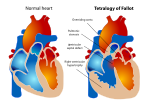Transpulmonary pressure is the difference between the alveolar pressure and the intrapleural pressure in the pleural cavity. During human ventilation...
2 KB (304 words) - 00:28, 17 June 2024
intrapleural pressure. This provides a transpulmonary pressure, causing the lungs to expand. If humans didn't maintain a slightly negative pressure even when...
3 KB (387 words) - 11:27, 13 September 2023
Spirometry (redirect from Maximal pressure)
spirometer needs to be complemented by pressure transducers in order to simultaneously measure the transpulmonary pressure. When having drawn a curve with the...
30 KB (3,455 words) - 18:36, 6 July 2024
substances For lungs, see Transpulmonary pressure This disambiguation page lists articles associated with the title Transmural pressure. If an internal link...
395 bytes (84 words) - 05:51, 15 July 2024
intrapleural pressure increases, resulting in the difference between the intrapulmonary pressure and the intrapleural pressure (defined as the transpulmonary pressure)...
66 KB (7,489 words) - 20:13, 16 September 2024
intrapleural pressure equals or exceeds alveolar pressure, which causes dynamic collapsing of the lung airways. It is termed dynamic given the transpulmonary pressure...
2 KB (217 words) - 14:24, 8 July 2024
maneuvers may be necessary for severe ARDS by briefly raising the transpulmonary pressure. It is recommended that the head of the bed be raised if possible...
124 KB (13,431 words) - 01:34, 19 October 2024
Talmor, Daniel (1 June 2018). "Effects of Prone Positioning on Transpulmonary Pressures and End-expiratory Volumes in Patients without Lung Disease". Anesthesiology...
11 KB (1,303 words) - 22:50, 18 October 2024
inflate additional alveoli. The transpulmonary pressure vs Volume curve of inhalation is different from the Pressure vs Volume curve of exhalation, the...
61 KB (7,557 words) - 03:50, 31 July 2024
patient Mechanical ventilation using high tidal volume (VT) and transpulmonary pressure can damage the lung, causing ventilator-induced lung injury. Permissive...
3 KB (387 words) - 08:01, 16 April 2024
[citation needed] This form of stress is thought to be applied by the transpulmonary pressure (gradient) (Pl) generated by the ventilator or, better, its cyclical...
12 KB (1,539 words) - 20:02, 8 November 2023
Barotrauma (redirect from Lung over-pressure injury)
over-distension, the injury may be termed volutrauma, but volume and transpulmonary pressure are closely related. Ventilator induced lung injury is often associated...
78 KB (8,107 words) - 19:02, 10 October 2024
intrapleural pressure equals or exceeds alveolar pressure, which causes dynamic collapsing of the lung airways. It is termed dynamic given the transpulmonary pressure...
30 KB (3,557 words) - 17:08, 1 June 2024
ventilation and stabilizes the alveoli against collapse at resting transpulmonary pressures. A deficiency of pulmonary surfactant in preterm infants results...
5 KB (583 words) - 23:40, 8 July 2024
concurrent with lower "airway," "transpulmonary," and "intra-abdominal" pressures, than experienced with continuous positive pressure ventilation (CPPV), in study...
16 KB (1,374 words) - 12:27, 22 July 2024
Alveolar pressure (Palv) is the pressure of air inside the lung alveoli. When the glottis is opened and no air is flowing into or out of the lungs, alveolar...
2 KB (217 words) - 00:18, 8 February 2024
Cardiac output (section Pulse pressure methods)
patient position, therapy or condition.[citation needed] In PiCCO, transpulmonary thermodilution, which uses the Stewart-Hamilton principle but measures...
75 KB (9,361 words) - 21:41, 26 August 2024
delayed perfusion, reduced drainage of catabolites, increased transpulmonary pressure, and iron deposits around the cerebral veins. Multiple sclerosis...
59 KB (6,269 words) - 03:29, 3 September 2024
2. Lastly, group 3 showed lower basal and vasodilator-induced transpulmonary pressures compared to group 2. In conclusion the inhibition of the enzyme...
16 KB (1,892 words) - 04:41, 25 March 2024
resistance—PVR > 240 dynes s cm−5 . Pulmonary artery occlusion pressure— PAOP < 15mmHg or transpulmonary gradient—TPG > 12 mmHg where TPG = MPAP − PAOP. The diagnosis...
28 KB (3,181 words) - 19:56, 7 August 2024
techniques can be used in performing TOF repair. However, a transatrial, transpulmonary artery approach is used for most cases.: 153 The repair consists of...
78 KB (8,318 words) - 00:47, 2 October 2024
catheterization, but less harmful. One of them is the Thermodilution Transpulmonary (TDTP), developed in the late 1990s, which presents risk of iatrogenic...
33 KB (3,550 words) - 05:05, 27 December 2023












